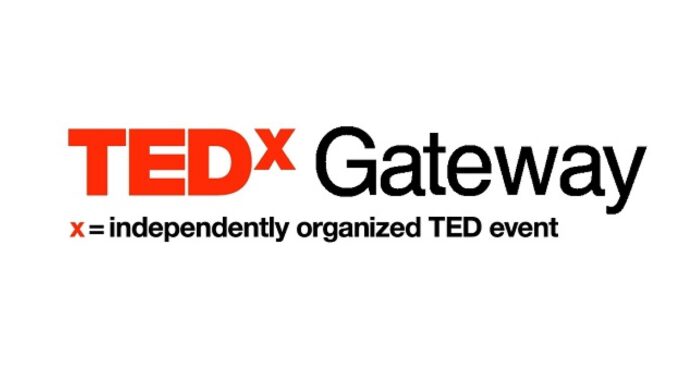My Journey To Uttar Pradesh
In his previous column, Dr Anantpal Singh talked about his experiences as a healthcare innovator in Bihar. This piece in the series explores Uttar Pradesh.
The importance of this State zooms across time and civilizations. The great Indus Valley civilization and Harappan civilization are historic.
Novelist Ruskin Bond once said: “I had been to other countries – in Europe,Asia and the Middle East – but none of them had provided even half as much variety, or so much to see and experience and remember, as this one State in northern India. You can travel from one end of Australia to the other, but everywhere on that vast continent you will find that people dress in the same way, eat the same kind of food, listen to the same music. This colourless uniformity is apparent in many other countries of the world, both East and West. But Uttar Pradesh is a world in itself.”
Indian culture has blossomed since time immemorial here. Uttar Pradesh is the land of the great rivers Ganga and Yamuna. The sacred soil of UP has seen heroes like Lord Rama who reigned over Ayodhya, Lord Krishna the eighth incarnation of Lord Vishnu who was born in Mathura, Lord Mahavira, Lord Buddha and the famous demon king, Ravana. In the 16th century, King Babbar, one of the descendants of Timmur and Genghis Khan, invaded India and brought the Mughals, who ruled from Agra.
Present day Uttar Pradesh is a famous tourist destination because of the Taj Mahal built in the 17th century by King Shah Jahan. Other famous sites are Bada Imambara and Chota Imambara, and Ramabhar Stupa, a magnificent 50-foot structure build over a portion of Lord Buddha’s ashes.
For us at Spectrum Health Solutions, Bihar inspired us to move our healthcare initiatives further up in India. We planned a trip to the State has given India 14 prime ministers. We surveyed Kanhauli, Bhogipati, Kundi, Nishan, Mahimapur, Gaddipur, Dewalkarpur and Jaunpur and talked to the villagers, and tried to understand their condition, which were incidentally identical to Bihar.
There were multiple ‘jhola chaap’ doctors and no medical pharmacies. People travel to Muftiganj to procure medicines. Since there are no qualified M.B.B.S doctors, the villagers are compelled to travel for treatment to Jaunpur city, which is another 22 km from Muftiganj. There is a government hospital 3 km from Gaddipur but it is lacking in facilities and availability of medicines. We zeroed in on Muftiganj to set up our clinic. There are eight villages within a radius of 8 km, covering approximately 15,000 to 18,000 people.
The local population depends on farming for their livelihood. In this neighbourhood, we discovered that there is perpetually one member in each family in need of serious medical help on account of some physical, pathological, infectious, addiction-related or hygiene-related health issue. This estimate is over and above deficiencies and malnutrition. Add to that skin ailments, joint and bone disorders, lung disorders, diabetes and hypertension. The rainy season is dreaded since there are frequent outbreaks of infectious diseases including gastroenteritis, typhoid and jaundice.
People spend 40% to 50% of their life’s savings on medical assistance. Since they have to travel long distances to get satisfactory medical help, the villagers have no choice but to turn to jhola chaap doctors.
Now, thanks to the Swachh Bharat Abhiyaan, the living conditions seem to be improving. People have started building toilets within their homes. Witnessing the poverty, high incidence of malnutrition in children and acute shortage of doctors, we plan to open five clinics providing free medical support to all. One is already operational.
I am pleased to be a part of the health revolution. My team We at Spectrum Health Solutions solemnly pledge all our support for the Beti Bachao movement by the government of the day. We would like to invite all like-minded companies to join us on this platform with constructive and decisive CSR support, and help in the formation of ‘a healthy India’.
 Dr Anantpal Singh is a leading physician, entrepreneur and health researcher from Spectrum Health Solutions Pvt. Ltd. Dr Singh envisions a global community with healthcare solutions which are simple to use and deliver better results than conventional methods.
Dr Anantpal Singh is a leading physician, entrepreneur and health researcher from Spectrum Health Solutions Pvt. Ltd. Dr Singh envisions a global community with healthcare solutions which are simple to use and deliver better results than conventional methods.
Views of the author are personal and do not necessarily represent the website’s views.
Thank you for reading the column until the very end. We appreciate the time you have given us. In addition, your thoughts and inputs will genuinely make a difference to us. Please do drop in a line and help us do better.
Regards,
The CSR Journal Team
CSR: Job Scammers At Work
In India, approximately 12 million people enter the workforce annually. The economy though has not created enough jobs to accommodate all of these people. This has made the jobseekers vulnerable, leaving way too much power with the employment providers. The employment gap in the market has given space to fake job scammers to execute scams and make money off the vulnerable job seekers.
A job scam occurs when a scammer poses as an employer or recruiter, and offers attractive employment opportunities which require the job seeker to pay money in advance. This is usually under the guise of travel expenses or training process required for the job. Once the money has been paid, the scammer disappears leaving the job seeker with financial loss and no job.
How do Job Scammers work?
Using Big Brand names:
Working at companies like TATA, Wipro and TCS is not just about earning a good salary but also about prestige. Since the hiring has gone down in recent years by private sector, job scammers use these big brand names to entice the vulnerable young people. They roll out fake offer letters promising high salaries for these job seekers asking them to pay in advance for training or travel expense which would confirm a job.
Using Reputed Job Portals:
The Job Scammers form their data bases by posting fake jobs on reputed job portals like naukri.com. They collect critical information of the jobseekers from the portal and to misuse later. Later, they would send them fake interview letters from big reputed companies asking them to pay in advance through Paytm for fixing these interviews.
Fake Websites:
The scammers would create fake websites so that on researching, the job seekers would land on a page of this website and feel that the job offer they have received is genuine. They also create fake social media accounts in the name of these fictitious companies. Sometimes, the websites would be a lookalike of the official website of a big company.
Fake Consultants:
The scammer would pose themselves as a consultant promising the candidates to get a job offer from reputed companies. They would charge the candidates at various steps to get them a job which does not exist in the first place.
The consequences of falling prey to these scammers can be devastating. In order to save yourself from it, it is wise to be alert at all times and do a lot of background research before trusting anyone with critical information.
Thank you for reading the story until the very end. We appreciate the time you have given us. In addition, your thoughts and inputs will genuinely make a difference to us. Please do drop in a line and help us do better.
Regards,
The CSR Journal Team
CSR: Four Steps To Avoid Online Shopping Scams
In the world where everyone wants everything at the click of a button, online shopping has become a daily exercise. Big retail websites like Amazon, and Flipkart have actually become bigger than most of the physical retail stores. However, this has also caused a rise in the incidents of online shopping scams. According to Experian’s Digital Consumer Insights 2018 report, 1 out of 4 customers in India is a victim of online scams.
As the internet has become the everyday tool to trade, gossip or consume content, it is not really possible to completely stop buying or selling things online, even with a high risk of fraud. However, there are certain preventive measure that can be taken in order to avoid the scams as much as possible.
In order to stay away from the scams there are four details that need to be taken into consideration before entering any details or conducting a transaction.
Security status of the site:
The first test to see if the site is secured, is to see if it is an HTTPS site. If the site is HTTPS, the details you enter is going to be encrypted and protected from intercepting malicious parties. However, many phishing sites can appear safe because they use HTTPS. So the second test is to see if the domain name includes the name of the company. Because not all the websites use a technology that displays their verified identity information in the address bar without it being 100 per cent accurate. You can also check who the domain is owned by.
Reliability of the Site:
In order to save yourself from after losses, it is important to run a background check on the site before putting any valuable information in it. https://safeweb.norton.com/ is a website safety checker by Norton which allows you to check the website safety by putting its URL in the search bar. Other than that, it is always wise to look up the website’s user reviews and also check their Wikipedia page.
Authenticity of the contact details:
Checking the authenticity of the contact details is one of the easiest ways to check if the party is fraud. Every website as a rule of thumb has contact details displayed on the website. Verifying it by making few phone calls, looking up in the directory or google earth, and calling up the vendors to re-verify it can actually save so many scams from happening. Another tip off is to look for grammatical errors and spelling mistakes in the contact details for that could easily be a scam.
Too good to be true factor:
Have you ever looked at an offer and felt that it is too good to be true? Well of you have then it probably is! The scam sites often promote products on extremely low prices tempting you to make an impulse purchase. These prices are low with or without any sale season. When the order is placed, the purchaser often receives damaged or substandard product leaving them with regret.
It is certainly not possible to stop online shopping altogether. But it is wise to stop and do some background work instead of making an immediate purchase in the fear of missing out on an amazing offer. Because if the offer is true, it would surely be profitable but if it is not, it will bring in a lot of mental, physical and financial damage.
Thank you for reading the story until the very end. We appreciate the time you have given us. In addition, your thoughts and inputs will genuinely make a difference to us. Please do drop in a line and help us do better.
Regards,
The CSR Journal Team
CSR and Corporate Sustainability
Corporate sustainability is derived from the concept of sustainable development which is defined by the Brundtland Commission as “development that meets the needs of the present without compromising the ability of future generations to meet their own needs”.
Corporate sustainability essentially refers to the role that companies can play in meeting the agenda of sustainable development and entails a balanced approach to economic progress, social progress and environmental stewardship.
CSR in India tends to focus on what is done with profits after they are made. On the other hand, corporate sustainability is about factoring the social and environmental impacts of conducting business, that is, how profits are made. Hence, much of the Indian practice of CSR is an important component of sustainability or responsible business, which is a larger idea, a fact that is evident from various sustainability frameworks. An interesting case in point is the NVGs (National Voluntary Guidelines) for social, environmental and economic responsibilities of business issued by the Ministry of Corporate Affairs in June 2011.
Principle eight relating to inclusive development encompasses most of the aspects covered by the CSR clause of the Companies Act, 2013. However, the remaining eight principles relate to other aspects of the business. The UN Global Compact, a widely used sustainability framework has 10 principles covering social, environmental, human rights and governance issues, and what is described as CSR is implicit rather than explicit in these principles.
Globally, the notion of CSR and corporate sustainability seems to be converging, as is evident from the various definitions of CSR put forth by global organisations. The genesis of this convergence can be observed from the preamble to the recently released draft rules relating to the CSR clause within the Companies Act, 2013 which talks about stakeholders and integrating it with the social, environmental and economic objectives, all of which constitute the idea of a triple bottom line approach. It is also acknowledged in the Guidelines on Corporate Social Responsibility and Sustainability for Central Public Sector Enterprises issued by the DPE (Department of Public Enterprise) in April 2013. The guidelines state:
“Since corporate social responsibility and corporate sustainability are so closely entwined, it can be said that corporate social responsibility and sustainability is a company’s commitment to its stakeholders to conduct business in an economically, socially and environmentally sustainable manner that is transparent and ethical.
10th Edition of TEDxGateway in Mumbai
The biggest melting pot of inspiring ideas is back with its 10th edition of TEDxGateway on 2nd December 2018. Hosted at the DOME @ NSCI Mumbai, this year, audiences can brace themselves for a promising line-up of 20+ powerhouse intellectuals, each having an extraordinary story to tell.
Staying true to its theme of ‘Ideas worth Spreading’, the event will welcome thought leaders, visionaries, disruptors and trendsetters from across fields like education, science, technology, art and culture. Additionally, the main event will also be webcasted across 200 campuses in India and multiple cities hosting TEDx’s across the world, targeting over 150,000+ viewers.
This year, TEDxGateway will provide a platform to some of the most iconic names from diverse fields of expertise. Additionally, the platform will also host a Padma Shree Award-winning photographer and a 6-time TED speaker, amongst other interesting profiles.
The event will also see grand performances by Storror, Maati Baani & Shankarananda Kalakshetra followed by multiple sponsored initiatives at the venue. To further bolster TEDxGateway’s vision, leading corporate organizations have joined hands in supporting the event this year including Aditya Birla, JSW, Rustomjee & Qatar.
When: December 2
Time: 9 am – 6.30 pm
Where: Dome @ NSCI, Worli (Mumbai)
Visit: tedxgateway.com
We are Water foundation drives the swachhata mission across nation by constructing toilets
We Are Water foundation recently completed its ‘WASH’ project in 17 schools across Chennai, Vellore, Alwar, Rewari and Faridabad targeted at providing better sanitation facilities to schoolchildren.
For this initiative, Roca joined hands with World Vision India, Habitat for Humanity India, Gramya Foundation and United Way of Chennai with an aim to improve and promote hygienic practices for children with special focus on girls by enabling schools to achieve sustainable access to adequate potable water and improved sanitation.
With an endeavour to provide a healthy and hygienic ambience for the school kids, the brand enabled the installation of overhead tanks/poly tanks, high quality bathroom fittings, hand wash sinks with other requested requirement for renovating the toilets such as floor tiles, submersible pump, white washing, bore well drilling etc. The foundation is glad to bring better sanitation facilities to over 14,000 students and inculcating the habit of clean practices among them through health/hygiene messages painted on toilet walls and Behavioural Training program.
KE Ranganathan, Managing Director, Roca Bathroom Products Pvt. Ltd said, “We believe in providing better sanitation and hygiene facility to all especially these school kids to focus and excel in their respective fields.”
Aligning to Government initiatives like Swachhata Hi Seva under Swachh Bharat Mission (SBM), the foundation is determined to drive the behavioural change and make larger impact in the lives of the individuals by providing adequate sanitation and water availability facilities across the country.



















